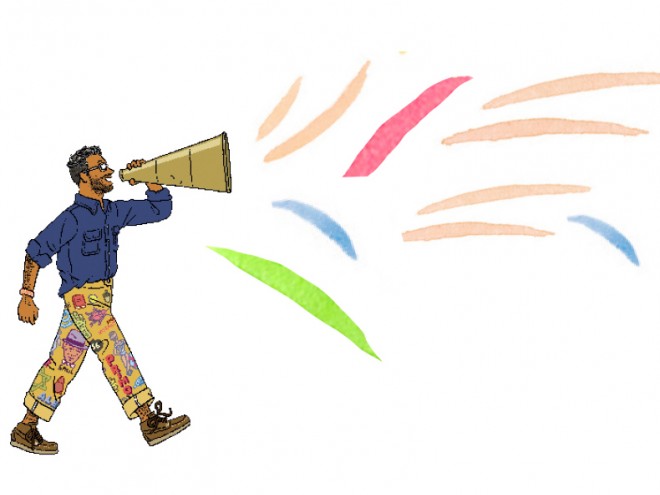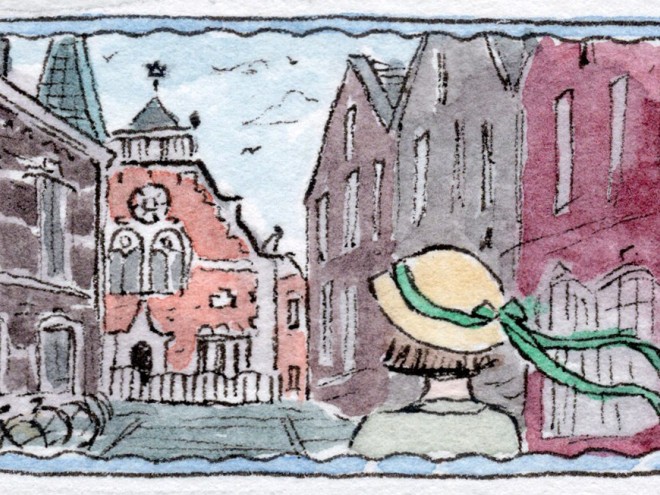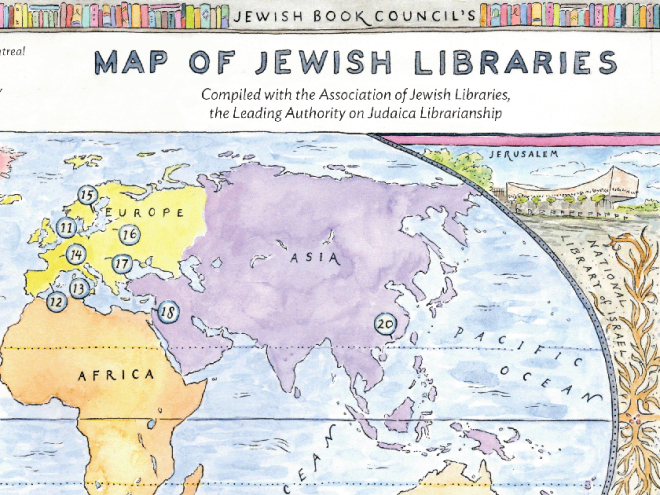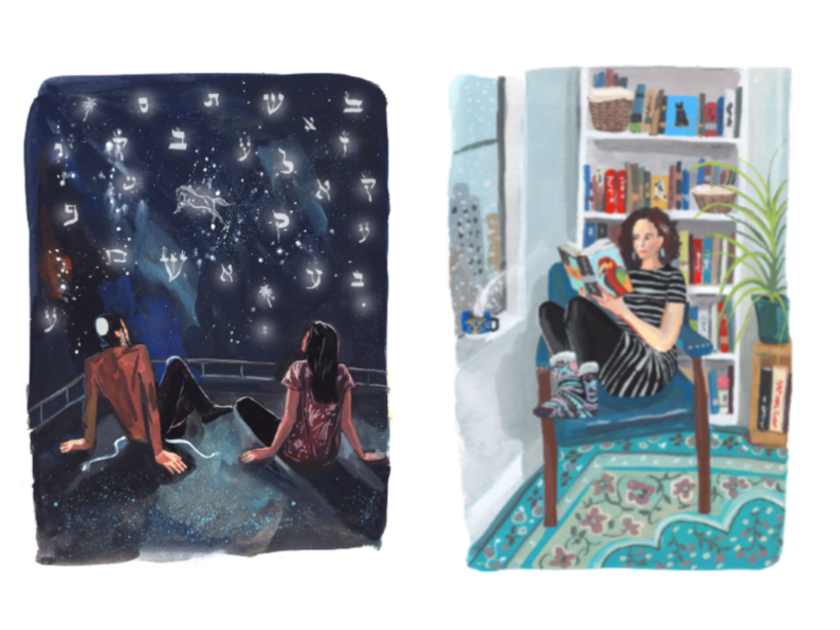
Illustrations by Jenny Kroik
Jenny Kroik is a renowned illustrator whose work has appeared in literary journals such as The New Yorker and The Paris Review, news outlets including The Washington Post and The LA Times, streaming services and broadcasts like HBO and PBS, and many more. Kroik has also illustrated short stories published in JBC’s literary journal, Paper Brigade—most recently “The Roman Palms” by Barak Kassar.
In conversation with Paper Brigade’s editorial director, Kroik discusses her creative process, the ways in which her personal experiences and family history inform her work, and the childhood encounter with Torah that first sparked her interest in illustration.
__________
Thanks to Jenny Kroik’s generosity, JBC is hosting a special giveaway for Short Story Month: every purchase of Paper Brigade during May, 2025 counts as an entry to win a signed print of the illustration for “The Roman Palms”! Purchase your copy here.
__________
Becca Kantor: Jenny, your portfolio is incredibly wide-ranging. I would love to hear about your creative process. Is there a difference between how you approach illustrating a piece of fiction and creating other types of artwork?
Jenny Kroik: I usually start a project by researching all I can about it. First, I read the piece and get an initial impression. I’ll doodle on the sides of the paper (if it’s a story or a brief, I print it out. I think better when it’s in “analog” form!). Often, these doodles end up evolving into the final idea. I also normally look up the author, and also look at other examples from that publication, to get an idea of the vibe I should aim for.
I don’t know if there’s a big difference in how I illustrate different pieces. My work is mostly narrative, so I try to think of how I’m telling a story, even if it’s a painting of a plate of food or of a group of people.
BK: We are thrilled to be featuring your illustration for Barak Kassar’s short story “The Roman Palms” in the 2025 issue of Paper Brigade. It’s visually stunning and encompasses so many of the story’s themes. What was your inspiration for it?
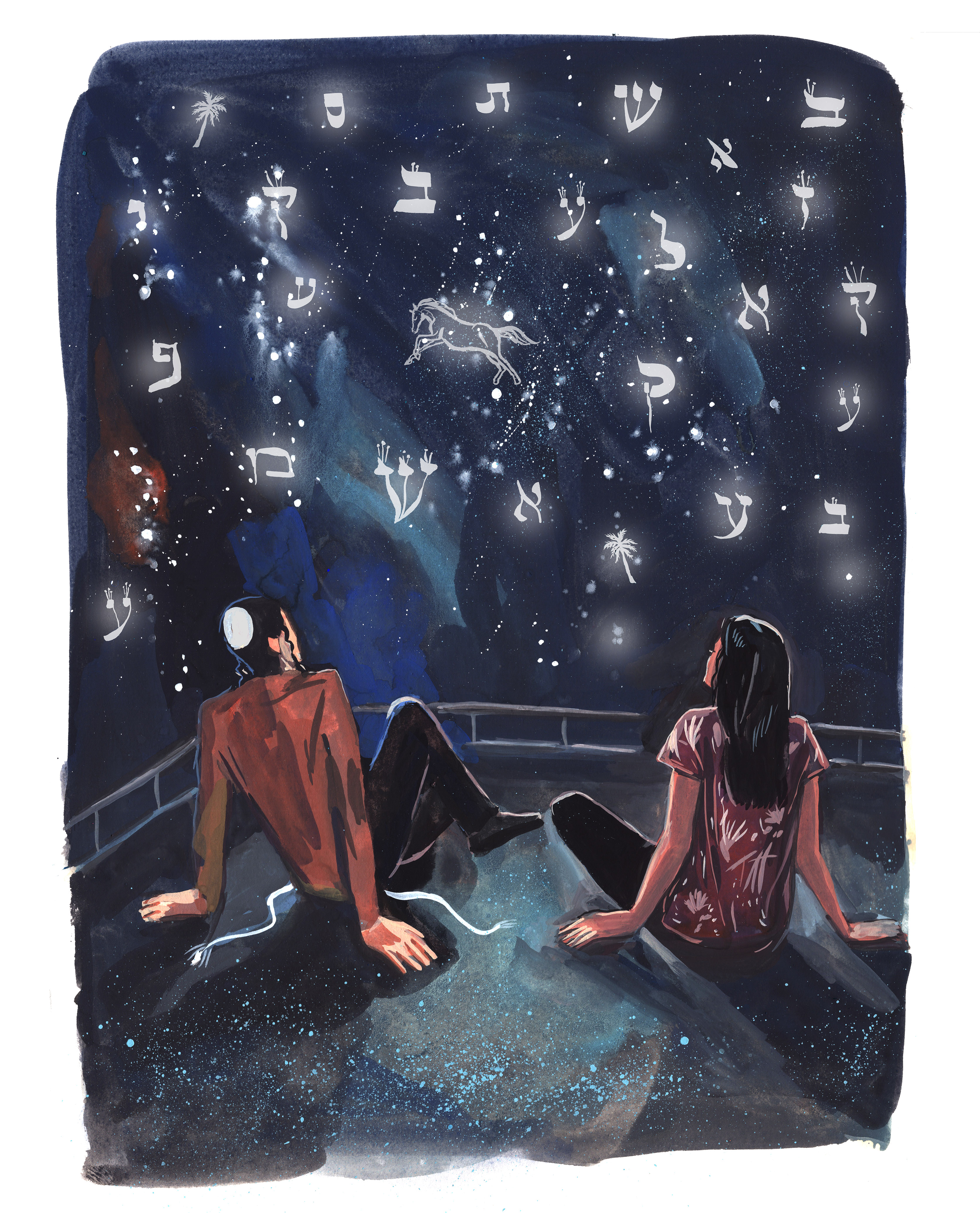
Illustration by Jenny Kroik
JK: I really loved Barak’s story. It transported me to the different places in the story, especially the building that the main character lives in. I could really picture it, the textures and the smells. I thought of times in the past when I visited that area of the country and how it felt, how the light looked, etc. Infusing some personal memories and feelings into an artwork sometimes helps to make it a bit more “real” for the viewer.
BK: You also illustrated two stories in our 2024 issue. One of the many aspects that struck us about your illustration for “Noble” by Scott Nadelson is that it both captures the protagonist’s small shtetl world and hints at the broader strokes of history that threaten to erase it. How did you go about depicting this?
JK: This piece was also really great. I loved the story, and, as with Barak’s story, there were a lot of personal thoughts and feelings that I could infuse into the art. It reminded me of stories that my grandma told me about her childhood in Russia, and the way I reacted to them as a kid.
For that illustration, I looked at photographs and tried to get the clothing and environment right. I also looked at paintings by artists who depicted Jewish life in the shtetl. Chagall, for example. Even though his style is so different from mine, I get inspired by looking at work that transmits the music and emotion of Jewish life.
BK: I was delighted to learn that your husband was the model for your paintings of the protagonists of both “Noble” and “The Roman Palms.” For you, what is the importance of having a personal connection to the writing you illustrate? In what ways do you find or create this connection?
JK: My illustration work uses a lot of figures, and I tend to use some form of reference for figures, especially if they’re doing something that is harder to draw from memory (figures seen from above, for example, or in running poses, etc.) My poor husband acts as an unpaid model for a lot of my projects, haha! I generally find men tougher to paint, and I feel lucky when my husband is the right model for a story I’m working on. I do tend to “cast” people for different roles for my illustrations. I felt that he worked well for both of them, but obviously I changed his appearance somewhat and gave him different clothing and hair.
BK: Finally, what is one Jewish book that inspired you at some point in your life? How did it influence your work?
JK: There are too many to choose from. I am going to give a weird answer and say the Torah! I remember that in elementary school we were given an assignment to make a decorative border to one page of a chapter in the Torah that we were reading in school. This assignment really inspired me: I remember spending a lot of time finding visual inspiration in the text and thinking about how to choose the colors. It was the first, and most stressful illustration assignment I ever worked on, because the client was really important — you don’t want to make God unhappy, for sure! My mom and I also went to see an illustrated manuscript exhibit at the Israel Museum of Art around that time. The exhibit had some stunning illustrations of the Bible by different artists, and they also had Alice in Wonderland playing cards, children’s books, Chagalls (always Chagalls), and other illustrated literary works. I think that might have clinched it for me: I realized that I really love illustrating texts!
Becca Kantor is the editorial director of Jewish Book Council and its annual print literary journal, Paper Brigade. She received a BA in English from the University of Pennsylvania and an MA in creative writing from the University of East Anglia. Becca was awarded a Fulbright fellowship to spend a year in Estonia writing and studying the country’s Jewish history. She lives in Brooklyn.
